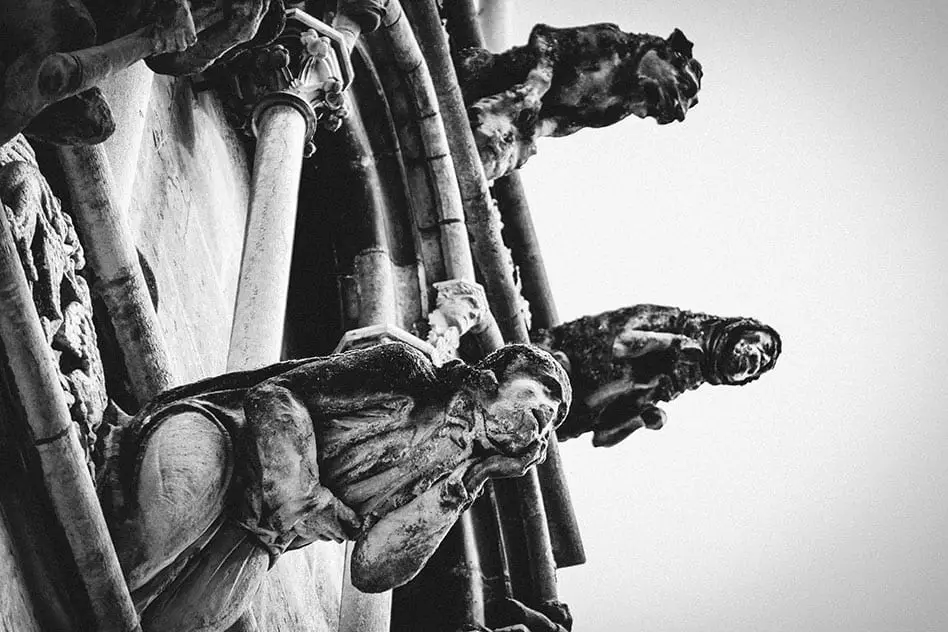
Most people have seen a gargoyle, those weird looking creatures on the walls of old churches and cathedrals. But what are they actually for, and why do they look so creepy?
Gargoyles are a form of decorative stone spout which funnel water away from the walls of a building. This stops water from staining the walls as well as preventing erosion of the stone and mortar. Gargoyles were popular on gothic churches and cathedrals, where they often took the form of mythical creatures such as dragons or basilisks.
If these sculptures do not function as a water spout, they are technically a ‘grotesque,’ not a gargoyle. However, in recent times the word gargoyle has evolved to encompass all types of decorative sculpture that adorn buildings.
Gargoyles come from a time that was steeped in mythology and mystery. In medieval times it was common for people to believe in spirits. It is for this reason that gargoyles and grotesques take fantastical forms. There are many legends behind these quirky decorations, which we will explore in the post.
Why Do Buildings Have Gargoyles?
Gargoyles divert water away from the walls of a building to prevent staining and erosion. They also have several secondary uses, including telling stories, encouraging church-going, and protecting churches from evil spirits.
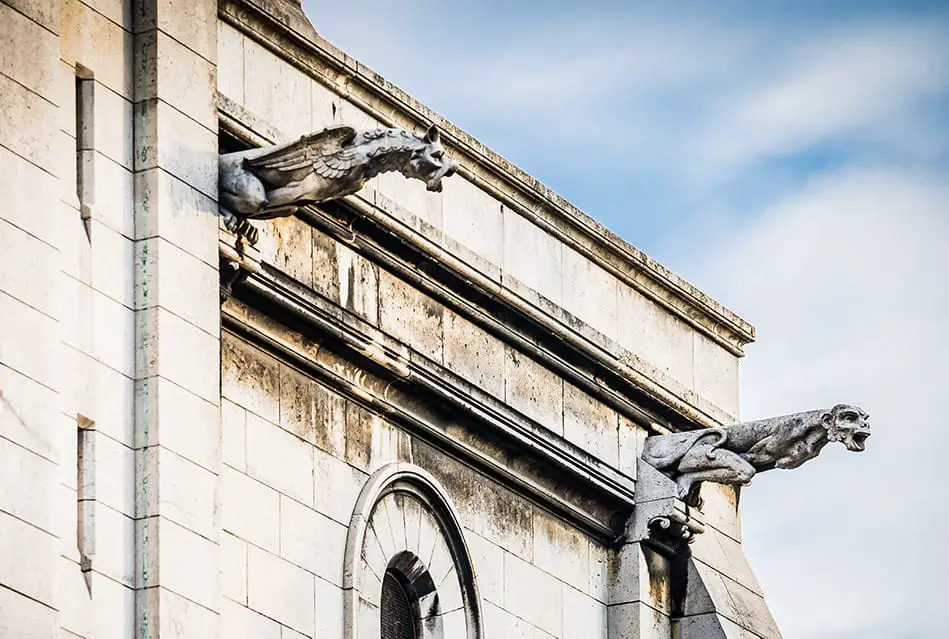
They Divert Water
Gargoyles are a form of stone spout which funnels water away from the walls of a building. It was essential to divert water away from stone buildings as it would stain the walls and even erode the mortar and stone.
Technically, any spout that directs water away from a building’s walls could be called a gargoyle. However, the word gargoyle is almost always used to refer specifically to decorative stone creatures.
Buildings often featured multiple gargoyles to divert water flow from the roof and minimize any potential damage.
They Tell Stories
During medieval times, much of the general population couldn’t read. The church, therefore, used stone sculptures and stained glass windows to portray biblical tales.
In this respect, gargoyles acted as entertainment for the masses in an age before books or film.
They would also act as a reminder of important teachings from the bible.
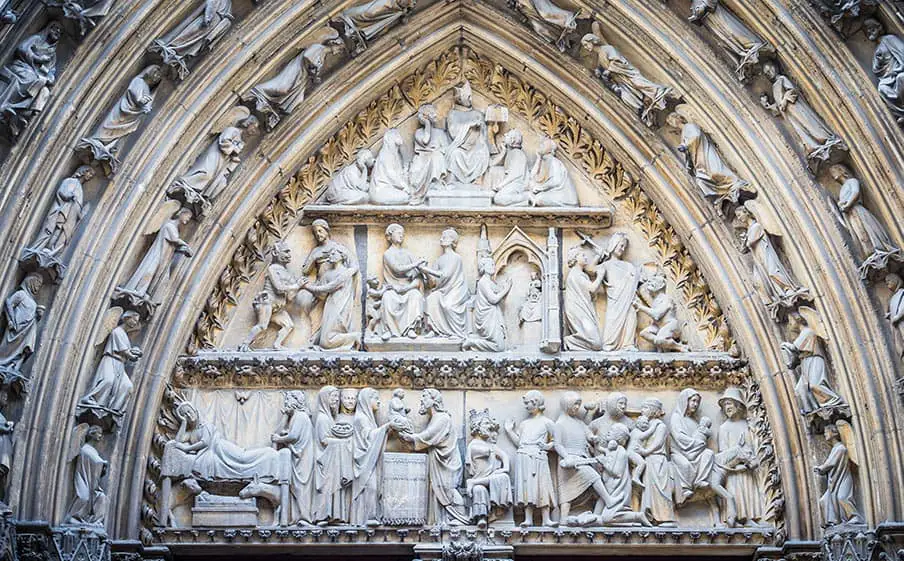
They Encourage People To Go To Church
Some people believe that the purpose of gargoyles was to remind churchgoers that evil spirits were always lurking. This would scare people, ensuring they returned to church and continued to follow the word of the bible.
Legend says that gargoyles are the souls of people who have sinned. These souls were intercepted on their way to hell and placed on churches and cathedrals by God. This is then a reminder to the living of what might happen if they too commit sin.
They Protect The Church From Evil Spirits
Another story told about gargoyles is that they are used to protect the church from evil spirits such as the devil. You could see them as a sort of medieval scarecrow, scaring evil spirits instead of birds.
They Make People Laugh
Gargoyles did not always depict scary beasts. It was quite common for them to be light-hearted and even amusing representations of people in the real world.
This could be priests and bishops or just a person that the stonemason didn’t like very much!
Comical gargoyles have become increasingly popular in the modern-day. The buildings of Oxford University feature many humorous representations of people who work at the institution.
What Is The Difference Between A Gargoyle And A Grotesque?
Grotesque is the general term for a decorative stone sculpture on a building, usually depicting a mythical creature.
A gargoyle is a type of grotesque that functions as a water spout to direct water away from a building’s walls.
Technically, gargoyles must function as water spouts. However, today, the word is commonly used to describe all types of grotesque.
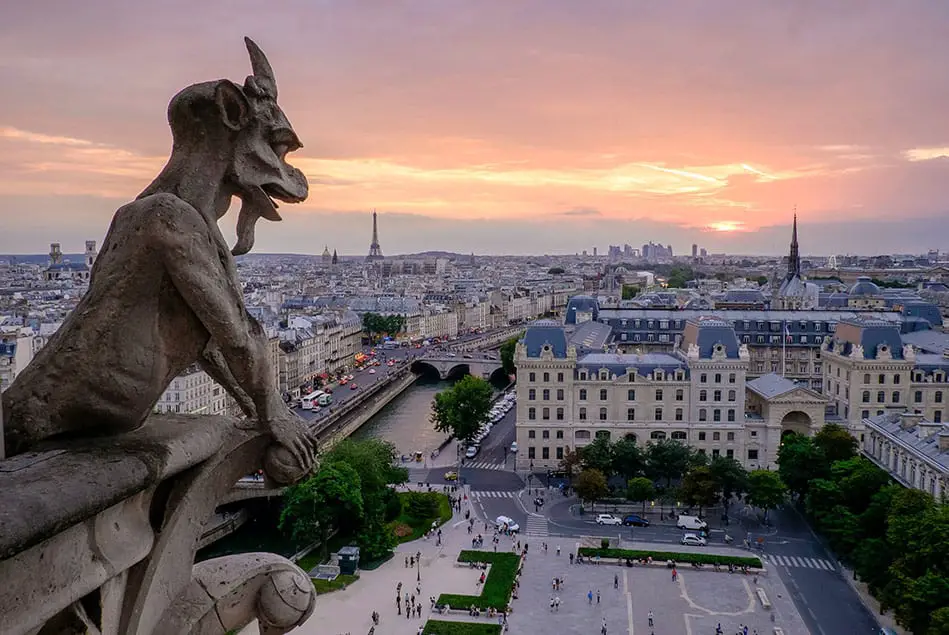
Why Are They Called Gargoyles?
There are two different theories as to how gargoyles got their name.
An Old French Word For Throat
The term gargoyle comes from the old French word ‘gargouille,’ which means throat. The English words gurgle and gargle have the same origins.
It is understandable how a type of water spout would get its name from a word like this.
A Mythical Story About A Dragon
There is a myth from around 600AD about a dragon named ‘Gargouille.’ This creature prowled the river Senne near the town of Rouen in northern France and terrorized the local people.
A saint named Romanus captured and killed the dragon. The villagers set the dragon on fire, burning its body, but its head was fireproof and remained intact. They then mounted its head on the village wall as a reminder of God’s power.
It is also easy to see how a dragon’s head displayed on a wall would inspire the creation of gargoyles.
Personally, I don’t know who to believe!
What Are The Different Types Of Gargoyle?
There is a vast array of gargoyles worldwide. Here are a few of the most common creatures represented in stone.
Mythical Creatures
Chimera
A chimera is a mythical creature that combines the features of two or more animals. They usually contain the characteristics of a lion, goat, and reptile.
Basilisk
A basilisk is a serpent created by the satanic cross-breeding of poisonous toads and roosters. It is said that a basilisk can cause death just by looking at you.
The animal was blamed for the spread of syphilis through Europe in the 15th century, said to be caused by its venom.
Aspic
An aspic is a mythical dragon, often portrayed with one ear on the ground and the other plugged by its own tail. This is said to represent the inability of Man to listen to the demands of God.
Griffin
The griffin is a mythical creature combining the body of a lion and the head and wings of an eagle.
Unlike many creatures represented by gargoyles, the griffin is not an evil spirit.
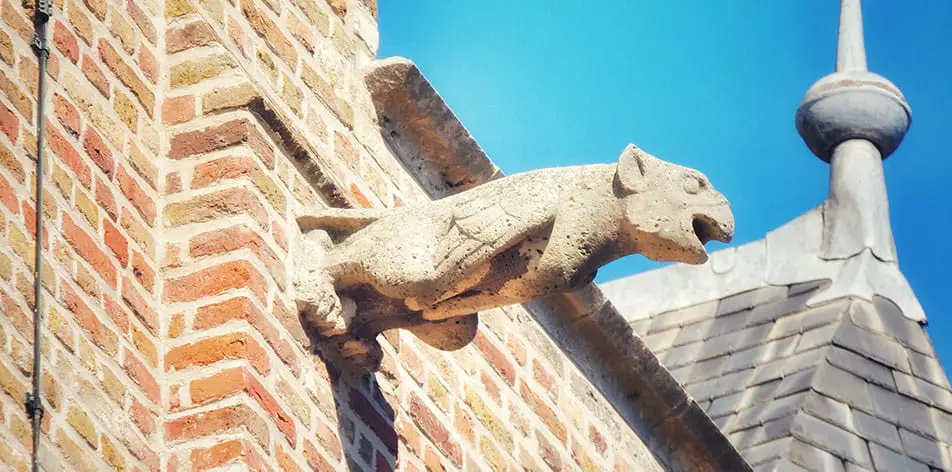
The Green Man
The Green Man was the pagan God, who is a symbol of rebirth. These are often depicted as a face with a crown of leaves and branches.
Multi-faced Grotesque
This is another form of pagan imagery. The Multi-faced figure represents the holy trinity of the father, the son, and the holy spirit.
Animals
It is also common for real-life creatures to be represented as gargoyles. There are most commonly lions, bats, pelicans, eagles, frogs, elephants, and cats. The list goes on!
Humans
It’s not just creatures that feature. It was and still is common for humans to be represented as gargoyles. This could include monks, bishops, and priests, however today, there are often figures of famous figures or even a self-portrait of the stonemason.
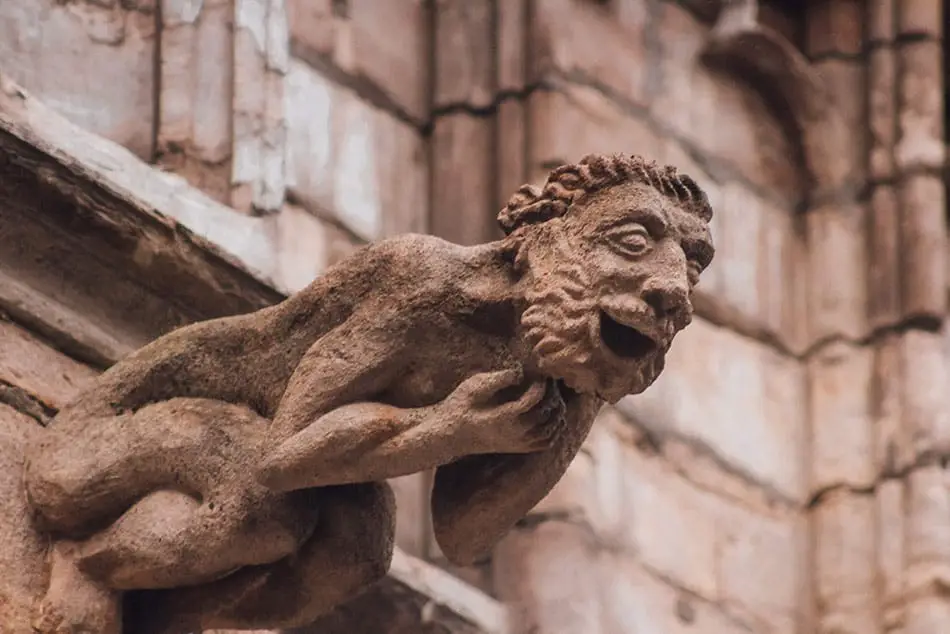
When Was The First Gargoyle Made?
Gargoyles were most popular in the medieval period from 900-1500AD. This was when superstition was high, and belief in evil spirits was a part of everyday life.
The word gargoyle was introduced during this period, but some gargoyles date back much earlier than this. There were similar features in ancient Egypt and on Greek temples.
Where To Find Gargoyles
Traditionally gargoyles are placed on the walls, spires, and buttresses of churches and cathedrals. They can also be found in many historic universities in the UK, US, and beyond.
Gargoyles can be found globally, but one of the best countries to find them in is France. This is because there are over 100 cathedrals in the country, most of which were built during the middle ages – the gargoyle’s golden age.
New York has more gargoyles and grotesque per square meter than any other city in the US. This is partly because the city has more cathedrals than any other city.
Famous Buildings With Gargoyles
Chartres Cathedral, France
Chartres Cathedral in France is one of the most outstanding examples of gothic architecture in France. Its lavish decoration features hundreds of grotesques and gargoyles.
Notre Dame Cathedral, France
The gargoyles of Notre Dame are rumored to take flight during the night and take watch over the city.
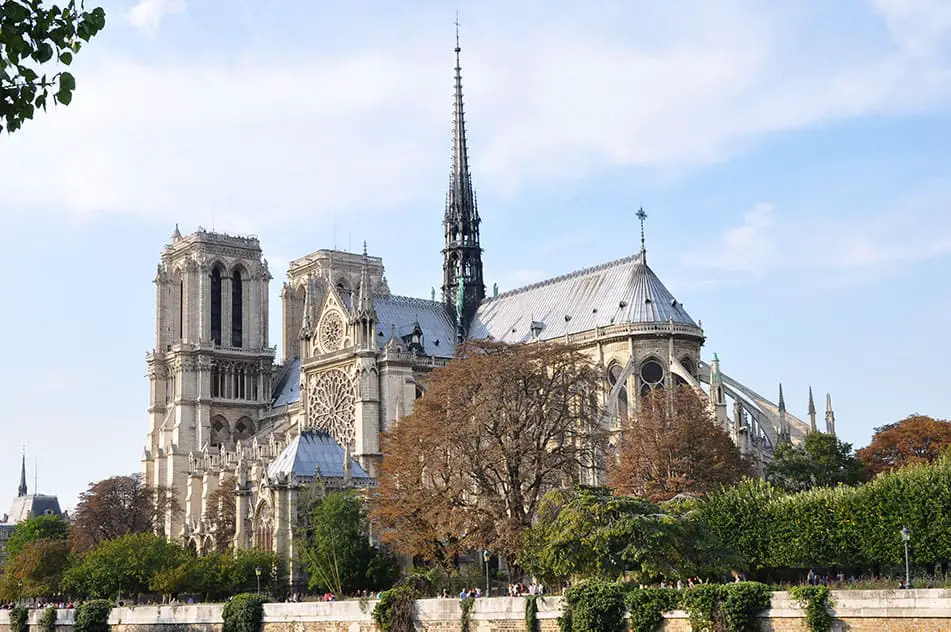
Oxford University, UK
The Gargoyles of Oxford University are famous for featuring representations of former professors who have taught at the institution.
Natural History Museum, London, UK
The Natural History Museum in London isn’t in a cathedral or church, but is host to a vast array of gargoyles.

Princeton University, New Jersey, USA
The buildings of Princeton University feature some very unusual grotesques, including dinosaurs and crocodiles.
Washington National Cathedral, Washington DC, USA
Washington National Cathedral features many modern-day gargoyles and grotesques, including one of Darth Vader.
St John the Divine Cathedral, New York, USA
St John the Divine Cathedral in New York contains gargoyles that tell modern interpretations of bible stories. One carving shows the destruction of Manhattan.
Do People Still Make Gargoyles Today?
As gargoyles are used to channel water, they suffer from erosion. This means it is unlikely for a single fixture to last more than 100 years.
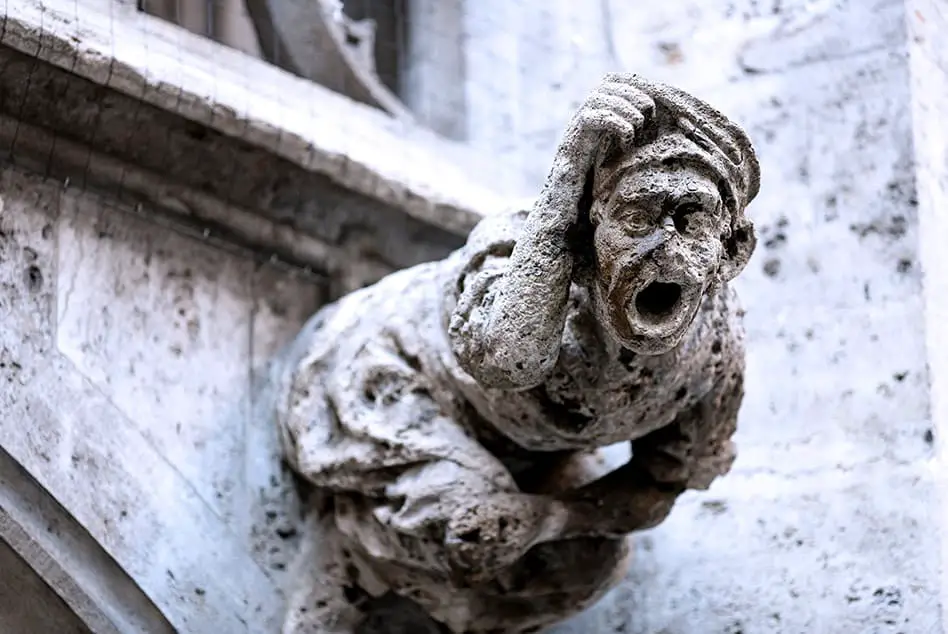
As gargoyles erode, not only do they lose their features, but they can become dangerous. It is, therefore, essential that they are continually repaired and replaced.
This is a job done by contemporary stonemasons. These skilled workers use the same technique, tools, and stone as the original masons who built the medieval churches and cathedrals.
The new gargoyles that are made don’t always replicate what was there previously. The replacements are often less demonic and a bit more humorous.
Some modern-day gargoyles have been made to represent famous figures. At Oxford University, there are grotesques in the form of professors and lecturers. There is even a grotesque in the shape of Darth Vader on the Washington National Cathedral!
Not Everyone Approved Of Gargoyles
Saint Bernard, a 12th-century church leader, was certainly not a fan of gargoyles. He described them as “ridiculous monstrosities,” which were an embarrassment to the church and a waste of money.
“Surely, if we do not blush for such absurdities, we should at least regret what we have spent on them.”
Lighten up, Bernard!
If you found this article interesting, you might also enjoy Why Do Buildings Have Copper Roofs?

